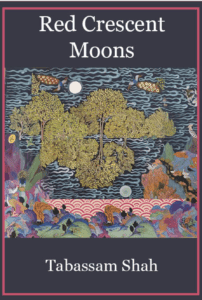
When attempting to get a “handle” on poets (or any artist), it’s standard—and helpful—to identify them into general categories, such as race, gender, ethnicity, geography, etc. And there’s no denying that poets so labeled often share commonalities of subject matter, language use, references, and general sensibilities, which offer readers richer ways of understanding those categories. But, of course, no artist wants to be so confined, as Walt Whitman yawps: “I am not contained within my hat and my boot soles.” Certainly, all good poets “contain multitudes.” To label Uncle Walt as an “American” poet helps us to understand—at a time when America was taking its first steps away from royalty—his celebrations of the individual “self,” yet he is also a poet of spirituality, of love, of nature. Langston Hughes was also an American poet, but Black, and so his take on America is different: “I am America’s darker brother/They send me to eat in the kitchen/when company comes…”
Of late, Appalachia has received wider poetic attention when poets learned that the region doesn’t only include West Virginia, Kentucky and points south, but actually is more expansive. Poets in western Pennsylvania, eastern Ohio, even southern New York State can identify as an Appalachian poet. Yet, in keeping with Whitman’s famous tenet concerning “multitudes,” in what ways does a “labeled” poet write both inside and outside any particular category and integrate in a unique poetic voice those categories into a singular larger vision we call—well, poetry?
A good example of this integration of categories into a singular voice and vision would be the poet Tabbasam Shah, who asserts that she is “a child of Pakistani immigrants growing up in the foothills of Southern Appalachia.” Her award-winning (a recent recipient of the Watershed Group Poetry Prize) first book, Red and Crescent Moons, introduces an underheard (indeed, often unheard) and fresh voice into the Appalachian poetic lexicon, demonstrating that a breakdown of barriers enriches both of the so-called categories of “Muslim” and “Appalachian,” (and this book offers us more, of course—political, familial, the natural world, and several poems about the act of writing itself, among others) leaving us, particularly in many of this volume’s richly crafted poems, with a deeper understanding of each. (Philip Terman, from the forward)
